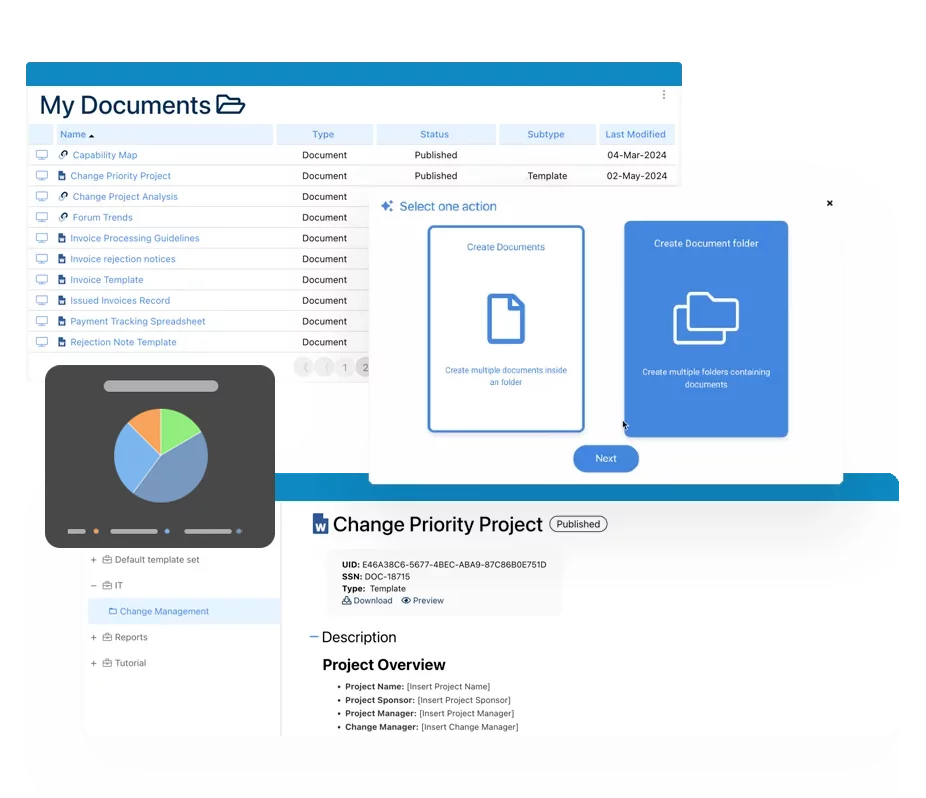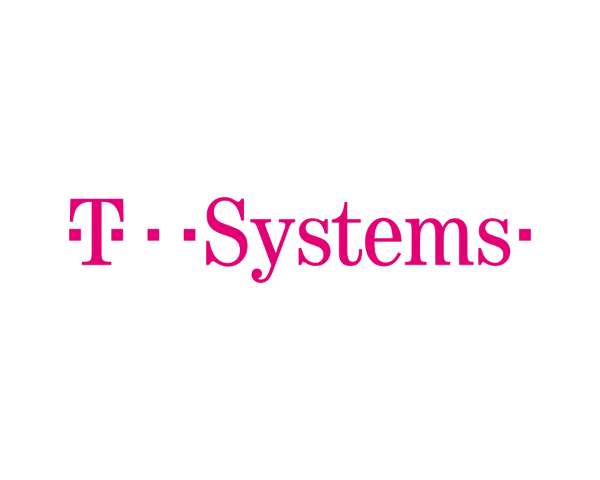- Business Process Management (BPM)Document Management System (DMS)Electronic Quality Management System (QMS)Risk, Governance & Compliance (GRC)Low Code Rapid Application Development (LC)Business Continuity Management (BCM)Enterprise Architecture (EA)Business Process Management (BPM)Document Management System (DMS)
- Document Control Overview
- AI Content Creation & Improvement
- Policy & Procedure Management (SOP)
- AI Content Mining Parser
- Collaboration & Governance
- Data Migration & Integration
- Interfacing Offline App
 Electronic Quality Management System (QMS)
Electronic Quality Management System (QMS)- Quality Management System Overview
- Document Control & Records Management
- Audit & Accreditation Management
- Corrective & Preventative Action
- Quality Event (Non-conformity / Complaint/ Compliance)
- Risk Management
- Incident Management
- Environmental Health & Safety
- Product & Supplier Management (SCAR)
- Training Management
- Control Management
- Action Items Management
- Management Review
- FMEA
- Pharmacovigilance
- Data Migration & Integration
 Risk, Governance & Compliance (GRC)
Risk, Governance & Compliance (GRC)- Risk, Governance & Compliance Overview
- Risk & Control Management
- Regulatory Compliance
- Collaboration & Governance
- Data Migration & Integration
- Interfacing Offline App
 Low Code Rapid Application Development (LC)
Low Code Rapid Application Development (LC)- Low Code Automation Platform Overview
- Electronic Web Form Design (eFORMS)
- Database Table Entity Designer
- System Integration Designer
- Design & Manage Tasks
- Design & Manage BPMS Apps
- Custom Rules/Guards/Actions
- Electronic Services
- User Homepage
- BAM (Business Activity Monitoring)
- Custom Dashboard Design
- Data Migration & Integration
 Business Continuity Management (BCM)
Business Continuity Management (BCM)- Business Continuity Management Overview
- Business Impact Analysis
- Disaster Recovery Simulation
- Action Item Management
- Mass Notification Management
- Asset Management
- Interfacing Offline App
 Enterprise Architecture (EA)
Enterprise Architecture (EA) - IndustriesRegulatory ComplianceUse CasesLearning CenterFramework & PracticesIndustries
- Healthcare
- Medical Device Technology
- Life Science, Pharmaceutical
- Aerospace & Defense
- Airlines and Aviation
- Media & Telecommunications
- Government and Military
- Technology
- Energy
- Logistics & Port Operations
- Banking & Capital Markets
- Retail & Consumer
- Consulting
- Education
- Engineering & Construction
- Manufacturing
- Financial Services
- Insurance
- Chemicals
Regulatory Compliance- Regulatory Compliance
- ISO
- ISO 9001 (guide)
- ISO 9001:2026 (preparation)
- ISO 17025
- ISO 27000
- ISO 27001
- ISO27002
- ISO 42001
- SOC 2 Type 1 & 2
- Sarbanes Oxley
- GxP
- GRC
- Basel
- Digital Signature
- GDPR
- IFRS
- NIST SP 800-53
 Use Cases
Use Cases- Quality Management System (QMS)
- Digital Transformation
- Continuous Improvement
- Governance, Risk & Compliance
- Knowledge Management
- System Deployment (ERP, CRM…)
 Learning CenterFramework & Practices
Learning CenterFramework & Practices - AboutCustomer SuccessPartners



Agence Metropolitain de Transport (AMT)
Please Select contact form.

Agence Metropolitain de Transport (AMT)
The ARTM was formerly known as the Agence métropolitaine de transport, which was founded in 1996. The new agency, which has the mandate to plan and integrate public transit in Greater Montreal, was created, along with Exo (public transit), its operating branch, following the disbanding of the AMT. The Agence Métropolitain de Transport (AMT) is a government agency reporting to the Ministry of Transportation, Sustainable Mobility and Electrification of Transportation with its mission of expanding and planning public transit services to improve commuting efficiency in the Montreal Metropolitan Area. It plans, coordinates, integrates and promotes sustainable mobility in close collaboration with its partners, including the mandate to develop, consolidate and complete the metropolitan public transport network and the commuter rail network.
Business Issues
AMT needed a clear vision of their current operating model to help guide them in the planning and execution of the new structure of the two entities. To ensure a smooth transition, the creation of an inventory of all of the AMT’s business processes was identified as a priority project for the organization and was included in its 2016 corporate plan. The objective of this project was to better understand their current operations and to provide a development plan for their new business operating model.
At the beginning of the project, the AMT business processes were created in MS Visio files. Not all of their maps were up to date or consistently represented. Several other processes were simply undocumented. In this context, it was difficult to identify the interrelations between processes, systems and resources as well as their potential impacts as a result of the announced organizational changes.
What’s more, tight deadlines to complete the project before the transition only made matters more pressing.
Solution
Following a formal invitation to tender, the AMT retained the services of and its Enterprise Process Center (EPC) solution to support it in identifying and managing its processes in the context of the transformation. Interfacing accompanied the AMT for the analysis of the impact of such changes and for the alignment of business processes within the new operational structures.
The documentation and standardization of AMT’s as-is business processes were to be undertaken. This information was to be captured in a centralized solution that provided the transition committee with an analytical tool to better assess the impact of the announced organizational changes.
The project plan included:
- Identify and prioritize business processes by vice-presidency.
- Standardize process documentation.
- Document prioritized processes. To minimize the impact on interviewees and stakeholders, their current documentation standard (ANSI) was to be maintained at this stage.
Acquisition of an integrated software solutions
- Issue a Request for Proposal for the acquisition of a software solution (following which the AMT retained the EPC solution and ’ services.)
- Deploy the EPC as a solution for documenting, analysing and consulting business processes, and to better guide them on how to bring about impending changes in the organization in the best way possible.
- Adopt a new BPMN-based process standard that facilitates the comprehension of new processes for AMT users accustomed to the old (ANSI) standard.
- Retain Interfacing services to convert documented process from MS Visio to the EPC.
- Conduct impact analysis on the changes they would need to implement support the new business operating model.
- Provide their employees with documentation on how their day-to-day will change and how to fulfil their responsibilities seamlessly.
- Extract valuable information from their data to better understand the implications of each alternative and to thereby make more informed decisions.
Business Value
The overall objectives and the value derived from the project were:
During the transition:
- Provide up-to-date business process data to the Transition Committee, so they can make better-informed decisions.
- Provide the Transition Committee with an analytical and decision-making tool to define the functional / organization structure of the new entities.
- Identify the touchpoints of all IT assets to assist in the analysis of the utilization of these assets in the present operating model and the new structure in the future model.
- To adopt a process approach to evaluate where they were, where they needed to be and which measures would need to be implemented to ensure that they reach their objectives.
- To see which nodes within their organizational blueprint would require the most effort to adjust, and should thereby be prioritized.
After the transition:
- Provide one of the new entities with a tool to centralize all documentation around its processes.
- Enable the entity to optimize its processes.
- Provide the new entities and employees with an update on how they are impacted by changes from an operation standpoint through documentation.
- Offer the second entity the possibility of have the same solution.
Methodology
In the context of the transition, it was important to define a strategy with the following premises:
- Reduce impacts on stakeholders during the project’s implementation and manage the change.
- Raise awareness on the importance of understanding, optimizing and controlling processes.
In order to expedite the execution of the project, we proceeded as follows:
- Break down the processes into vice-presidencies and document them in parallel.
- Identify key resources for coordinating/documenting their vice-presidencies’ processes.
- Involve process owners and raise awareness about the benefits of documenting processes and then optimizing and controlling them.
The project was completed in 9 months in total, where five months were allocated to the implementation of the solution and the conversion of the processes in EPC.
EPC’s Benefits
EPC has several features that are sought after in a Business Operating System. The first benefit of EPC is the documentation of business processes according to the BPMN standard. These process maps are made available to all employees and allow them to visualize and navigate to the information that is relevant to their processes. The solution enables the capturing of all information related to the organization’s operations, including standardized procedures.
The second benefit is for analysts; it offers them the opportunity to create, document and measure their objectives and to assign key performance indicators to specific activities. This will allow them to identify where their objectives are measured and, consequently, how better manage performance.
Finally, for decision-makers, EPC offers better visibility on all the activities of the organization. It provides the ability to assess the impacts of any organizational change by providing an end-to-end view of all its operations and how it relates to process, people and technology. Its added value above all is the ability to help decision-makers prioritize investments in terms of process optimization and/or automation of certain activities, resulting in the development or acquisition of software solutions. The ultimate goal is a healthier management of the organization’s resources and added value to its products and services.
Why Choose Interfacing?
With over two decades of AI, Quality, Process, and Compliance software expertise, Interfacing continues to be a leader in the industry. To-date, it has served over 500+ world-class enterprises and management consulting firms from all industries and sectors. We continue to provide digital, cloud & AI solutions that enable organizations to enhance, control and streamline their processes while easing the burden of regulatory compliance and quality management programs.
To explore further or discuss how Interfacing can assist your organization, please complete the form below.

Documentation: Driving Transformation, Governance and Control
• Gain real-time, comprehensive insights into your operations.
• Improve governance, efficiency, and compliance.
• Ensure seamless alignment with regulatory standards.

eQMS: Automating Quality & Compliance Workflows & Reporting
• Simplify quality management with automated workflows and monitoring.
• Streamline CAPA, supplier audits, training and related workflows.
• Turn documentation into actionable insights for Quality 4.0

Low-Code Rapid Application Development: Accelerating Digital Transformation
• Build custom, scalable applications swiftly
• Reducing development time and cost
• Adapt faster and stay agile in the face of
evolving customer and business needs.
AI to Transform your Business!
The AI-powered tools are designed to streamline operations, enhance compliance, and drive sustainable growth. Check out how AI can:
• Respond to employee inquiries
• Transform videos into processes
• Assess regulatory impact & process improvements
• Generate forms, processes, risks, regulations, KPIs & more
• Parse regulatory standards into requirements

Request Free Demo
Document, analyze, improve, digitize and monitor your business processes, risks, regulatory requirements and performance indicators within Interfacing’s Digital Twin integrated management system the Enterprise Process Center®!
Trusted by Customers Worldwide!
More than 400+ world-class enterprises and management consulting firms


























































